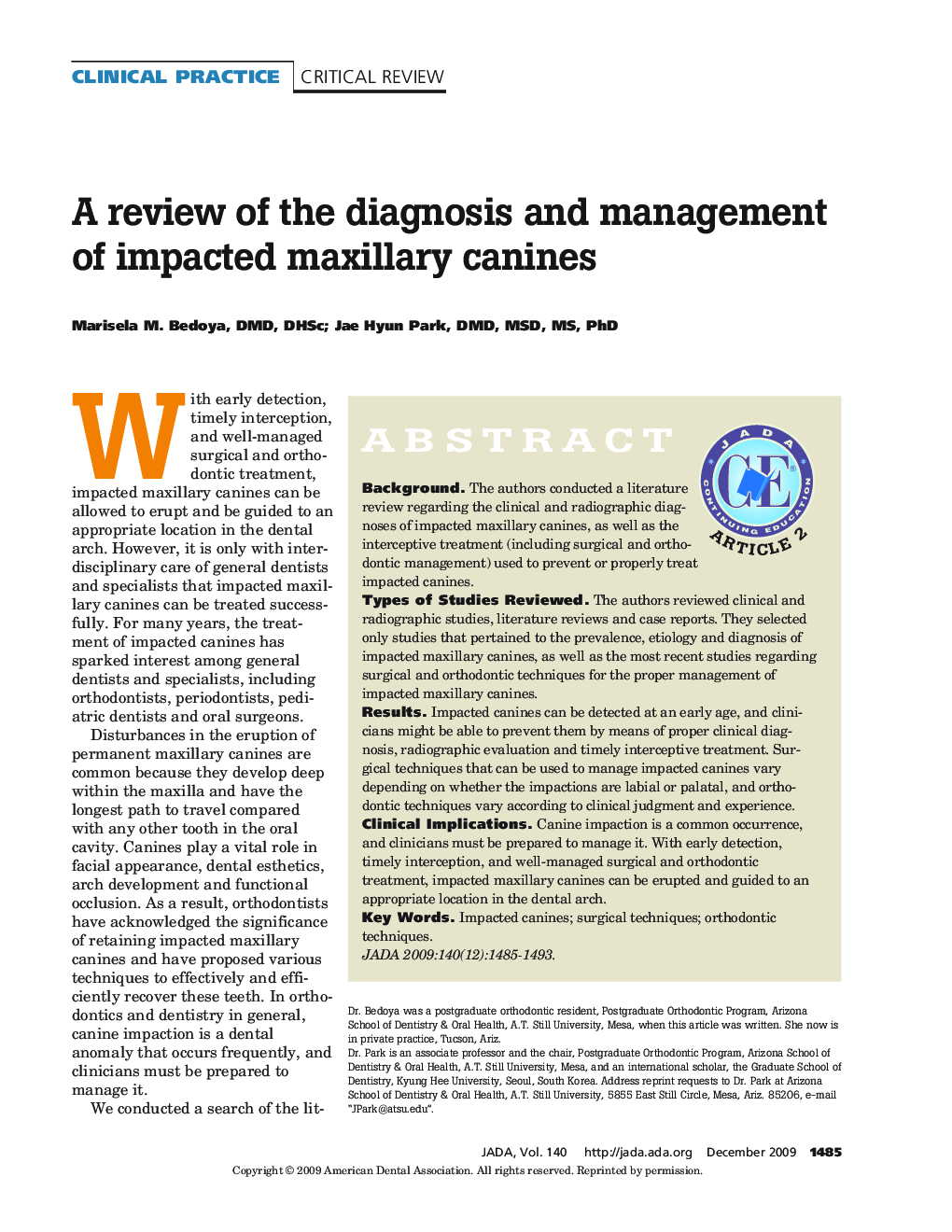| Article ID | Journal | Published Year | Pages | File Type |
|---|---|---|---|---|
| 3138980 | The Journal of the American Dental Association | 2009 | 9 Pages |
ABSTRACT BackgroundThe authors conducted a literature review regarding the clinical and radiographic diagnoses of impacted maxillary canines, as well as the interceptive treatment (including surgical and orthodontic management) used to prevent or properly treat impacted canines.Types of Studies ReviewedThe authors reviewed clinical and radiographic studies, literature reviews and case reports. They selected only studies that pertained to the prevalence, etiology and diagnosis of impacted maxillary canines, as well as the most recent studies regarding surgical and orthodontic techniques for the proper management of impacted maxillary canines.ResultsImpacted canines can be detected at an early age, and clinicians might be able to prevent them by means of proper clinical diagnosis, radiographic evaluation and timely interceptive treatment. Surgical techniques that can be used to manage impacted canines vary depending on whether the impactions are labial or palatal, and orthodontic techniques vary according to clinical judgment and experience.Clinical ImplicationsCanine impaction is a common occurrence, and clinicians must be prepared to manage it. With early detection, timely interception, and well-managed surgical and orthodontic treatment, impacted maxillary canines can be erupted and guided to an appropriate location in the dental arch.
